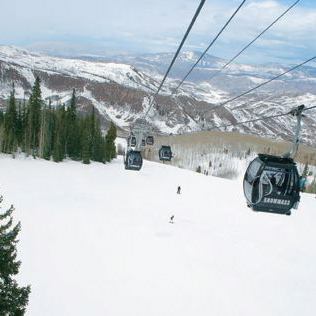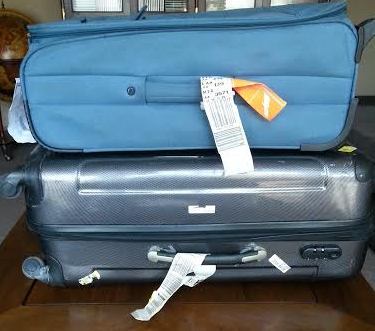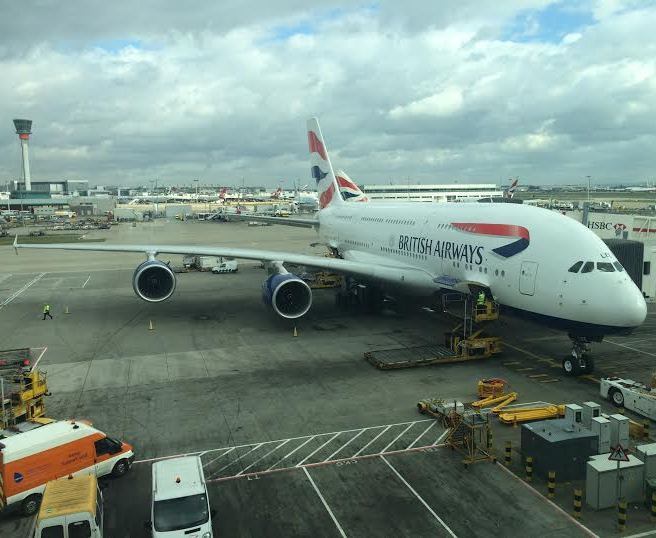Travel Tips
10 Winter Travel Packing Tips
 Already planning your ski vacation? Once you’ve nailed down the dates, the mountain and lodging, the only thing left is to sit back and dream of the slopes … and, oh yeah, there’s the packing.If the idea of traveling with bulky clothes, hats, gloves, boots, and skis or a snowboard leaves you in an icy cold sweat, have no fear. Veteran skier Kate Kuhlman provides her winter travel packing tips to make the process a little easier this winter.
Already planning your ski vacation? Once you’ve nailed down the dates, the mountain and lodging, the only thing left is to sit back and dream of the slopes … and, oh yeah, there’s the packing.If the idea of traveling with bulky clothes, hats, gloves, boots, and skis or a snowboard leaves you in an icy cold sweat, have no fear. Veteran skier Kate Kuhlman provides her winter travel packing tips to make the process a little easier this winter.
1. Anticipate the Costs
We all know that airlines have gone fee-crazy and in September, the Bureau of Transportation Statistics released a report showing that 20 U.S. airlines have already raked in $1.6 billion in baggage fees alone.
Obviously, if you can fit everything into a small suitcase and bring it as carry-on then you can avoid that pesky baggage fee; otherwise, consider joining an airline’s loyalty program to advance your way to elite status, thereby waiving that annoying fee.
When packing, keep in mind that most domestic airlines charge around $25 per bag for checked baggage. Currently, only one airline charges for carry-on baggage: Spirit. Southwest Airlines, however, has developed an entire campaign around the fact that it doesn’t charge anything for checked baggage. (That doesn’t mean the total travel cost is any cheaper, but at least there’s less nickel and diming going on.)
2. Check It
If you are not renting ski equipment, you will most likely be checking your gear. Put your board or skis in a hard case for protection. There are cases that store up to two boards or pairs of skis, which means if you are traveling with someone, it’s possible to pay only one checked-bag fee for gear.
Fees for checked sports equipment run from $50 – $100, depending on the airline and the weight of the bag. Also depending on the airline, skis or a snowboard may be classified as overweight baggage, sporting equipment or as checked baggage.
Southwest, for example, allows ski equipment to be substituted for a free bag—including one set of now skis, ski poles, and ski boot, even if they are packed and tagged separately, but overweight charges may still apply.
Here are some other airline classifications and charges:
- Alaska: Overweight/Oversized (50-100 pounds.) $50 – $75 depending on length.
- American: Skis and snowboards will be treated as first or second bags, excess baggage fees will be charged for the third bag. First bag $25, second $35, third to fifth $100.
- Continental: First or second baggage fee will be applicable, plus any overweight fee if the equipment is over 50 pounds. and/or 62 inches.
- Delta: Skis and snowboards are treated as regular baggage, unless they exceed 50 pounds or 80 inches. First bag $25, second bag $35, third bag $125. Oversized 51-75 pounds $90, 76-100 pounds $175.
- JetBlue: First bag is free, Overweight baggage 51-75 pounds $50, 76-99 pounds $100. Oversized baggage 63-80 inches $75.
3. Pack It Up and Ship It Out
Shipping bulky coat, boots and skis/snowboard is an excellent way to cut down on what you lug to the airport. The cost of advance ground shipping can be comparable to the checked-bag fee, and it reduces travel stress tremendously.
However, remember that if you’re traveling to a winter destination that’s not easily accessible or often roadblocked by changing weather conditions, your delivery could be delayed.
Create an online FedEx account and you may be eligible to receive between 8 and 16 percent off of shipping costs and arrange for the shipping online. Also, as a tip, carry extra shipping labels with you, so that you don’t have to spend time locating a nearby shipping center.
When shipping ski equipment, whether it’s with FedEx, UPS or other shipping service, make sure the items are securely packed. A Sportube is a telescopic container that’s designed just for this purpose; otherwise be sure the skis are securely tied, encased in bubble wrap and packed into a ski bag or hard-shell case.
4. Start Preparing
One of the best ways to keep your packing light is to make a list ahead of time. If this is an annual trip, you’ll quickly figure out there are items you need year after year, down to the little things like lip balm, moisturizer and sunscreen.
Instead of tossing things into your luggage, think about which outfits can be mixed and matched, and how many changes you’ll realistically make in a day.
Pack your bag a day or two ahead of time. That way you can take a second look at what you have and weed out the things you don’t really need.
5. Making Room
Although they take up precious space, don’t forget your hats, gloves, socks, thermal shirts and pants and scarves. If there’s room in your suitcase, place those on top in a separate bag; otherwise, separate them out and squoosh them into available gaps, or into pockets or boots. Remember to wrap breakable items like goggles inside a piece of clothing.
6. Layer, layer, layer
It might be cold, but really chunky sweaters will only take up room in your suitcase. Bring lighter pieces that can be layered, like T-shirts, tank tops and cardigans or wraps. Those items can easily be repurposed from day to night.
Another cold-weather must is a fleece or warm shell, which are lighter, but still warm and easier to pack in a carry on or suitcase. I usually wear my shell, since planes are so cold, and I limit myself to one. When I pack these in a suitcase I roll the shell or fleece up tight and secure with a rubber band or lay flat in the bottom of my suitcase.
I don’t recommend wearing ski clothes off the slopes unless you want to be the sweaty, smelly one at the bar.
7. Classic Comfort
On the plane you want to wear comfortable clothes and be appropriately warm upon arrival. But keep it classy. Jeans and a sweater, or a sweater dress and leggings look nice and put together. Also ladies, please wear flats or slip on shoes. It makes going through security much easier for you and less frustrating for the folks behind you. If you must bring along a bulky sweater or jacket,
wear that on the plane to save space in your suitcase.
8. Choose Practical over Fashionable
The thought of wearing heels in the snow gives me the shivers. Go with flat shoes and tall boots. On a week-long trip, you shouldn’t need more than three pairs of shoes.
9. Gadgets and Gizmos
A laptop would most likely weigh you down, plus this is a vacation, so if can, leave it behind in favor of your portable smartphone. If a computer is a must, consider investing in a more portable netbook to save precious space.
Don’t forget the charger for your computer, phone and mp3 player. I always have to put sticky notes around my room so I don’t forget to pack them. Keep them in one Ziploc bag and insert an inventory list so you don’t leave behind any important chargers.
I always bring my digital camera on a trip. Always. You never know what you will see, what memories you will want to capture, or when you’ll encounter the perfect blackmail opportunity.
However, even if you consider yourself a budding Ansel Adams, leave the fancy lenses at home. Most digital cameras these days are just fine for vacation pictures (even iPhones are shooting videos) and take up half the space.
10. Seek Help
For more tips on packing techniques, look into sites like onebag.com and butlerbureau.com.
Want more packing tips? Visit our Luggage & Packing Archives.
By Kate Kuhlman for PeterGreenberg.com












